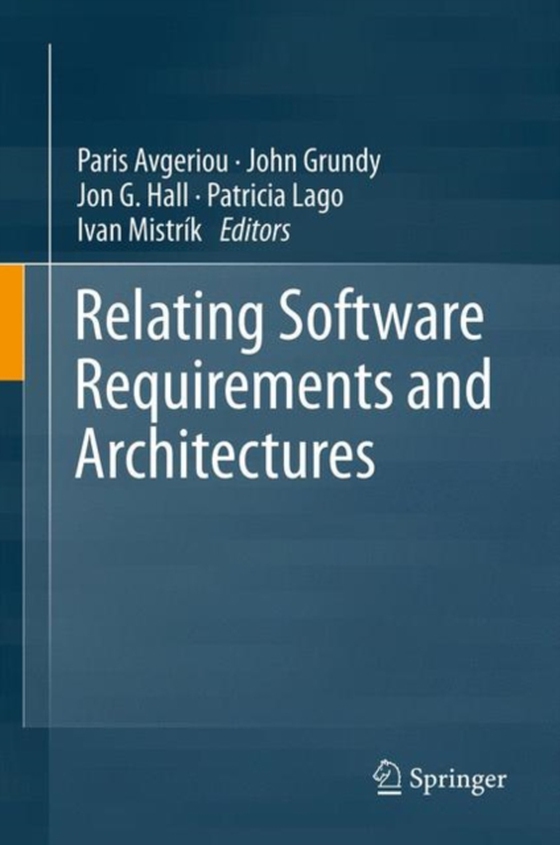
Relating Software Requirements and Architectures e-bog
1094,16 DKK
(ekskl. moms 875,33 DKK)
Why have a book about the relation between requirements and software architecture? Understanding the relation between requirements and architecture is important because the requirements, be they explicit or implicit, represent the function, whereas the architecture determines the form. While changes to a set of requirements may impact on the realization of the architecture, choices made for an ...
E-bog
1094,16 DKK
Forlag
Springer
Udgivet
3 august 2011
Genrer
KJQ
Sprog
English
Format
epub
Beskyttelse
LCP
ISBN
9783642210013
Why have a book about the relation between requirements and software architecture? Understanding the relation between requirements and architecture is important because the requirements, be they explicit or implicit, represent the function, whereas the architecture determines the form. While changes to a set of requirements may impact on the realization of the architecture, choices made for an architectural solution may impact on requirements, e.g., in terms of revising functional or non-functional requirements that cannot actually be met.Although research in both requirements engineering and software architecture is quite active, it is in their combination that understanding is most needed and actively sought. Presenting the current state of the art is the purpose of this book. The editors have divided the contributions into four parts: Part 1 "e;Theoretical Underpinnings and Reviews"e; addresses the issue of requirements change management in architectural design through traceability and reasoning. Part 2 "e;Tools and Techniques"e; presents approaches, tools, and techniques for bridging the gap between software requirements and architecture. Part 3 "e;Industrial Case Studies"e; then reports industrial experiences, while part 4 on "e;Emerging Issues"e; details advanced topics such as synthesizing architecture from requirements or the role of middleware in architecting for non-functional requirements. The final chapter is a conclusions chapter identifying key contributions and outstanding areas for future research and improvement of practice.The book is targeted at academic and industrial researchers in requirements engineering or software architecture. Graduate students specializing in these areas as well as advanced professionals in software development will also benefit from the results and experiences presented in this volume.
 Dansk
Dansk

